Thoughts on the martial art of BJJ: In her own words

Brazilian Jiu Jitsu - An art of grappling and submission
With so many martial arts available, it is difficult to choose what the most effective art is for self-defence and to improve one’s physical fitness. One amazing option is the art of Brazilian Jiu-Jitsu (commonly known as BJJ), the fastest growing martial art in the world. BJJ is founded on the concept that a smaller, weaker person can successfully defend themselves against bigger, stronger, heavier opponents by using technique and leverage.
With a growing number of women and men taking up the sport, we wanted to take the opportunity to sit down with two women - Sari Liem and Angie Cowan - and hear about their journeys into the world of BJJ. Especially given both are over forty and, as is often the case, most women of this age don't consider BJJ as an appropriate or viable activity to participate in let alone start for the first time. We sat down with Sari and Angie at their club York Judo & BJJ where they shared their particular insights on getting started in the sport, the lessons they've learned participating in BJJ, and what they would say to others wanting to give BJJ a go.
Want more insights and information on BJJ? Head to This is how we really ‘roll’: busting myths and learning the (fun!) truth about Brazilian Jiu Jitsu.

In her own words: Sari Liem (SL) and Angie Cowan (AC)
SWSCD: What got you both involved with BJJ?
AC: My son was taking BJJ and suddenly decided he wanted to take up Judo as well. Judo wasn't offered at that club we were at so I found York Judo & BJJ, a club that offered both programs. When I went to go and move him to the new club, my son threw me a curve ball and said he would only do it if I did it too. I think my son thought I would say 'no way', but not wanting to back down from a challenge, I took him up on his offer. When I arrived at the club, they provided me with a gi that I would need to wear to grapple in and got started on the mat.
That was twenty months ago. For me, BJJ has been a game changer. I've done lots of other sports including marathon/half-marathon running, crossfit and rowing throughout my life, but I have never felt stronger physically and mentally, this agile and flexible, and more cardiovascularly fit than I do right now. And, being willing to try something new as a 44 year old, it's given me the opportunity to develop not only a deep connection with a great club community but to also learn the importance of physical and mental strength in conjunction with good technique, strategy and having the ability to remain calm on the mat.

SL: For me, I grew up with a father who was a judo Sensei and who introduced me to judo when I was around 11 years old. I found that having a sensei for a father put a lot of pressure on me in terms of living up to his expectations. I was only one of two females in a class of boys and teenagers. I only lasted in Judo two years before I moved on to Kung fu as it wasn't as combative as judo, something I wasn't comfortable with at the time.
It wasn't until my two boys wanted to do judo when they were 7 and 9 (about four years ago) that I got back into the sport (at a different club than York Judo & BJJ). Seeing my boys do judo created both a sense of excitement and regret that I quit judo too soon. I was excited to see my children try something new and felt a sense of nostalgia. I was just sitting watching them do judo and I wanted to participate.
Their subsequent move to York Judo & BJJ has definitely solidified her commitment to Judo but also introduced her to BJJ. When I reflect on my journey, I wish that I had had the patience to truly train (in judo) when I was young. Especially given the physical and mental requirements. Now that I am older, I do feel I am more mentally prepared for the combative components of the sport. Adding BJJ was the best complement to my judo training. As I got older and prone to injuries from being thrown, I felt I was more comfortable on the ground. BJJ gave me greater depth in learning ground work in judo (referred as newaza in judo).
I'm pretty proud of where I am now. It was definitely a terrifying experience to get back on the mat after so many years, but now training in both judo and bjj.

SWSCD: What draws you to BJJ now?
SL: For me, it's the challenge of BJJ that keeps me coming back. I find with BJJ, it's not easy to work through your belt promotions and the expectations are higher. I also find that because the level of difficulty is higher, I enjoy a greater sense of accomplishment when I'm successful. I definitely don't want to lose the opportunity to physically and mentally challenge myself. It's important to continue to create new challenges, keep raising the bar that you're reaching for and learning what you're capable of.
AC: One of the most important lessons I've learned is that when you're on the mat, all of your life's stresses and worries cease to exist. It gives you a great break from your normal life. For me as a working mom who can often get stressed out and anxious, once I get on the mat, everything that's on my mind goes away. I also appreciate the importance of developing my mental strength. It's been a real game changer for me personally. A great example of how it's help me happened when my father collapsed and was in a coma just before I was to test for my stripes. His condition was critical but stable and I found the strength to focus on successfully passing my test. Although sadly my father passed away a few days later, I've also found that my time doing BJJ has helped me cope with his loss and de-stress for a moment. The mental freedom that BJJ gives me is like nothing I've ever experienced before.

SWSCD: What would you say to someone starting BJJ? What expectations should they have?
SL: BJJ is a tough sport but, at the same time, it's important to recognize that everyone is on their own personal journey with their own goals. It's not necessary to compare yourself to others. BJJ is a one-of-a-kind sport and as long as you're willing to put in the work, to learn and be open-minded, you will succeed. For women in particular, they are often not prepared for the reality of sports like BJJ in terms of the physical and mental demands involved. It's important they go in with an appreciation of these demands and adjust their expectations to align with them too.
AC: It's definitely important to be patient and to not get frustrated with yourself or discouraged in your progression. It's a steep learning curve and I keep a sense of perspective by remembering that it took Professor Patrick (her teacher) fourteen years to achieve a black belt. Patrick's a BJJ champion at all levels of the sport and it still took him fourteen years to get from A to Z in the sport.

Another important consideration is that everyone goes into the sport with differing levels of physical literacy and knowing how their bodies move. Details for such things as the way you fall, tucking your chin, shoulder rolls etc., might seem like common sense to some are simply not on the radar of others and therefore must be learned and experienced.
It's also really important to remember that your training partners are your friends and your teachers. Definitely plan to learn from them regardless of their age, talk to them and ask them questions. There are no stupid questions and no one will be frustrated by you asking them. Everyone was once a beginner, was in your shoes, and they understand that you're still learning.

SWSCD: What information would you want the beginner female BJJ participant to know that is obvious to you now but wasn't when you first started?
AC: Make sure you have tights/leggings to where under the gi. Ideally, tights that are specific for martial arts are good to wear, but realistically, any type will do as long as they can't be pulled down during grappling. Keep in mind that wearing multiple layers helps to prevent skin exposure as your gi is grabbed during training and grappling. Wearing tights also shows respect for your partner as they shouldn't have to worry about accidently exposing you in an inappropriate way or making you feel uncomfortable.Your gi will shift around as you are grabbed and wearing tights/leggings will make you feel more comfortable. Also know that once you start sparring with a partner, you will be in some positions (such as mounts and chokes) that may seem uncomfortable whether in terms of the close quarters (on top of them; them on top of you, having your gi grabbed etc.). Sometimes things happen and you need to be prepared for it. You should always know that a simple tap on your partner ( or just by saying 'Tap'), signals you are ready to start over.
In terms of practical issues, it's important to keep your nails short. Not just for the sake of your opponent (scratches, etc.) but to prevent them from catching on a gi and tearing. This can be very painful. I also would recommend you don't wear make up when doing BJJ. I've had my make up come off on my sparring partners, skin irritation from the make up and to show respect for your partner's gi and the club's mats and equipment.
When it comes to what to wear under the gi to prevent wardrobe malfunctions, i would recommend a strong sports bra that's durable, breathable and provides good coverage. You should also consider wearing a rash guard that will help protect you from experiencing any skin irritation while you're grappling and sparring. There are rash guards specifically for martial arts but these are not the only option. There are long-sleeved and short-sleeved options depending on your preference.

Keep in mind there are gis made for women. They have built in belts and fit better for people with hips. In my own experience, before I had a women's gi, the men's gi I was using kept falling down because it didn't fit right. In BJJ, there are men's, women's and unisex gis available to buy.
Finally, when I'm grappling, I wear a mouthguard. If you have braces or any other teeth concerns, a mouthguard will be important to help protect your teeth. If you wear a mouthguard, you'll have to focus on learning efficient breathing techniques to breath through your nose appropriately.

SL: I would agree with Angie. You will be in compact spaces and experience close contact with larger men (I am only 5”2 and 115 lbs) and it might seem intimidating and scary.
Practically speaking, be prepared to do a lot of laundry. Every time you step on the mat, you should make sure you have a clean gi and clean clothes under your gi. It's also helpful if you have a more than one gi so that you are able to alternate between gis.
There are specific differences between a gi made for BJJ and one made for judo. A judo gi tends to be wider in the arm or sleeve and this is beneficial for gripping and throwing. It's also usually looser and made with heavier material and a wide pant leg. In comparison, a BJJ gi has a much narrower sleeve because you tend to be on the ground more and you're less dependent on sleeve grip for stand up throws. A BJJ gi is also more tapered around the legs as well as this reduces the ability of your opponent to get a good grip of your gi.
Finally, always keep in mind how important it is to control your breathing when doing BJJ. When you're sparring, partners will remind each other to breathe when they notice that it's not happening. When competing and trying to escape a hold, there is a natural panic/fight or flight instinct that kicks in and you'll forget to breathe and only focus on using your strength. In this type of situation, it's super important to take a second to stop and think, breathe and work from there.
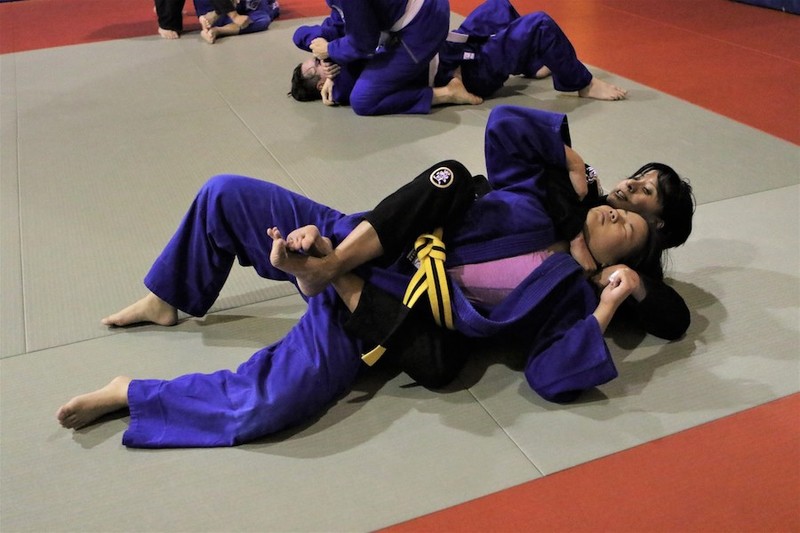
SWSCD: How has the opportunity to compete in BJJ as two women who are over forty?
SL: Having the courage to compete has been a big step for me. For me, the decision to enter into a judo or bjj tournament presents concerns regarding potential risk of injury. Although there are lots of precautions taken to prevent any injury from happening, it's still a very real possibility for it to happen. Proper training and preparation help me to do my part to lessen my chances of getting hurt.
When preparing to compete, it may also be important to watch your weight and/or cut your weight before a competition. Generally, your weight will determine which category you'll fight in. In preparation for one particular competition, I found I was 4 lbs over the lower weight group and the next weight group would have put me with people at least 18 kg heavier than me. By keeping an eye on my weight, it enabled me to fight with those closer to my weight group. But, with this said, you don't necessarily want to lose too much weight either as that may mean you're sacrificing muscle mass.
Another important issue is knowing that there may be a small field of female competitors in most weight classes - especially in the older age categories. Because of this, you'll have to be willing to compete against women who will be much younger than you and who will likely have better stamina or muscle endurance because of their younger age.
AC: When I saw Sari compete for the first time in judo, she had been a blue belt for all of five days and now she was up against a brown belt (a much higher level). I was blown away at how well Sari did and how competitive she was against her opponent. I was also impressed by Sari's first competitive win that came in a battle with an opponent who was almost half her age. It was definitely inspiring to watch Sari compete and seeing her success also motivates me to embrace the world of competition.

SWSCD: What kind of questions should be asked and research done when exploring new clubs?
SL: The questions that I would want to have answers to include: What is the student to teacher/instructor ratio in the class?; What is the curriculum?; What kind of teaching approach do the instructors take?; How many of the students are competitors versus how many or not.
I find each school (club) will have their own distinctive culture that they want to instil in their students. When we were looking for a new club, we spent a lot of time researching individual instructors at clubs. We looked into their overall philosophies, their expectations for their students and the respect that they instil into their students. You may also want to see if a club has a recreational or a competitive focus. Sometimes, a club with a more competitive focus may be less inclusive to new inexperienced students than those clubs that have a more recreational focus. If you're still not sure, it may be helpful to go to a tournament so you can watch how a club's coaches interact with their students.
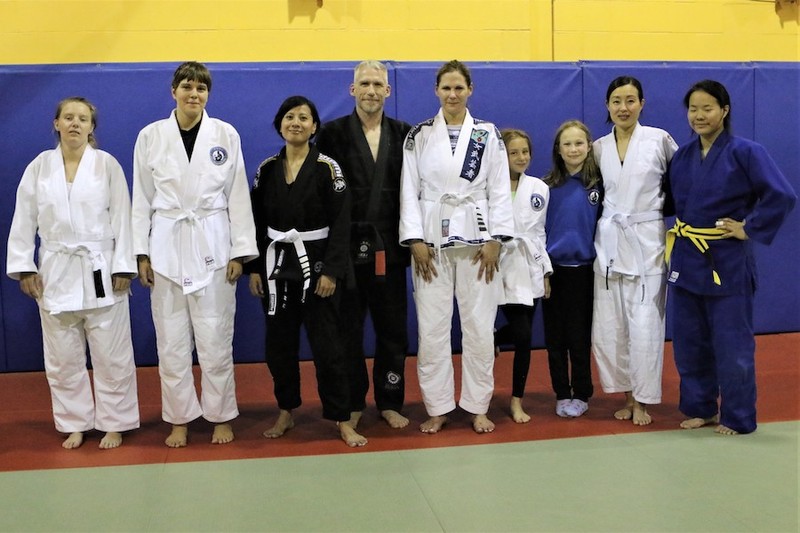
SeeWhatSheCanDo
Check out York Judo & BJJ in our Athlete Advisor, your online business directory for all things active. Explore, rate and review clubs, local community offerings and businesses that help you do your thing.
Have you tried Brazilian Jiu Jitsu? Do you have a sports moment that left you feeling like a superhero? Let us know in the comments below. Share your highlights directly on our Discover blog, or by using #seewhatshecando on social media and inspire others to get active.
Find or start your own active event or group at our SWSCD Hub and improve your strength, energy levels, and overall health.





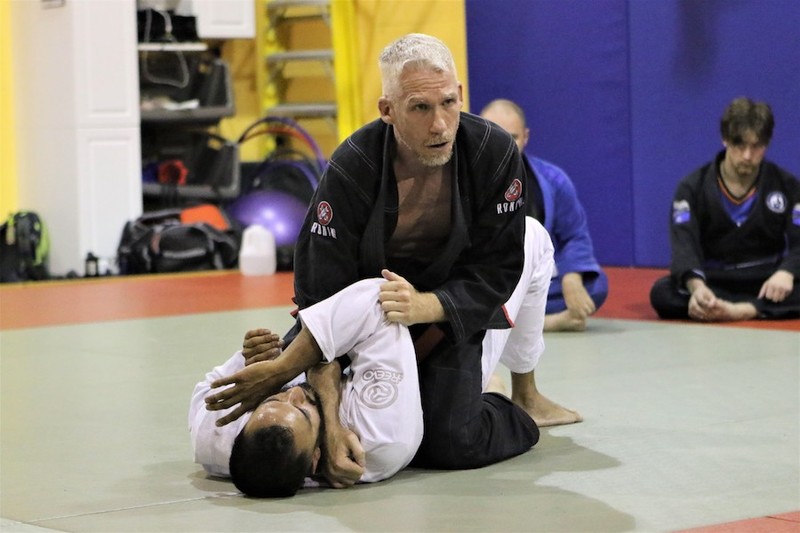

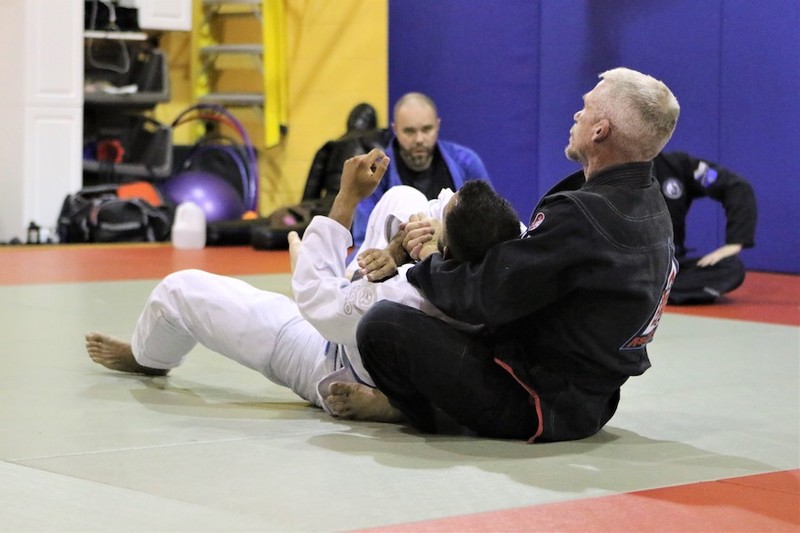
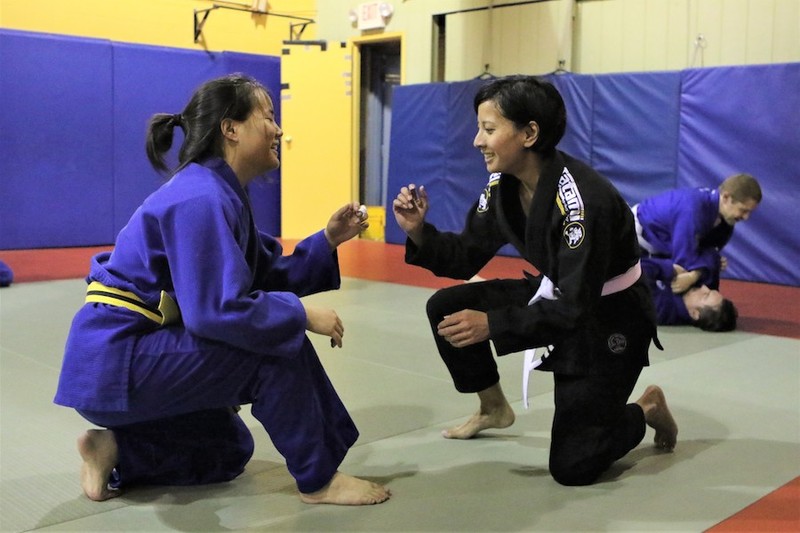
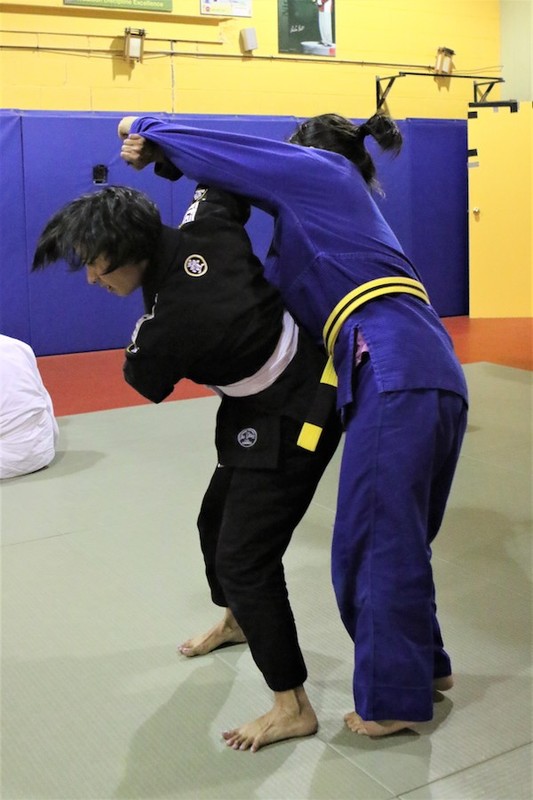
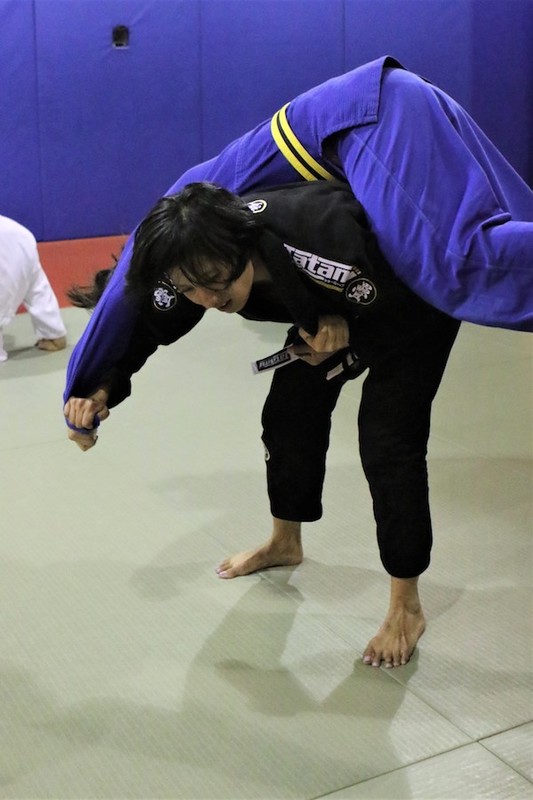




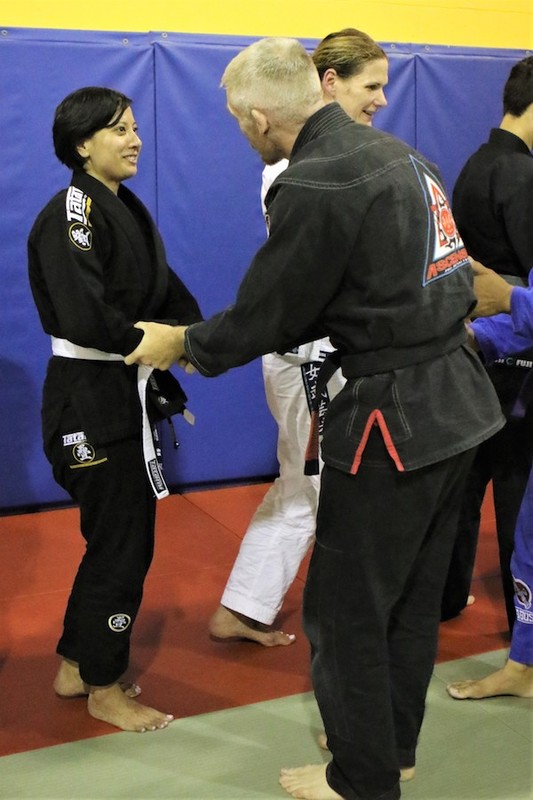

Comments